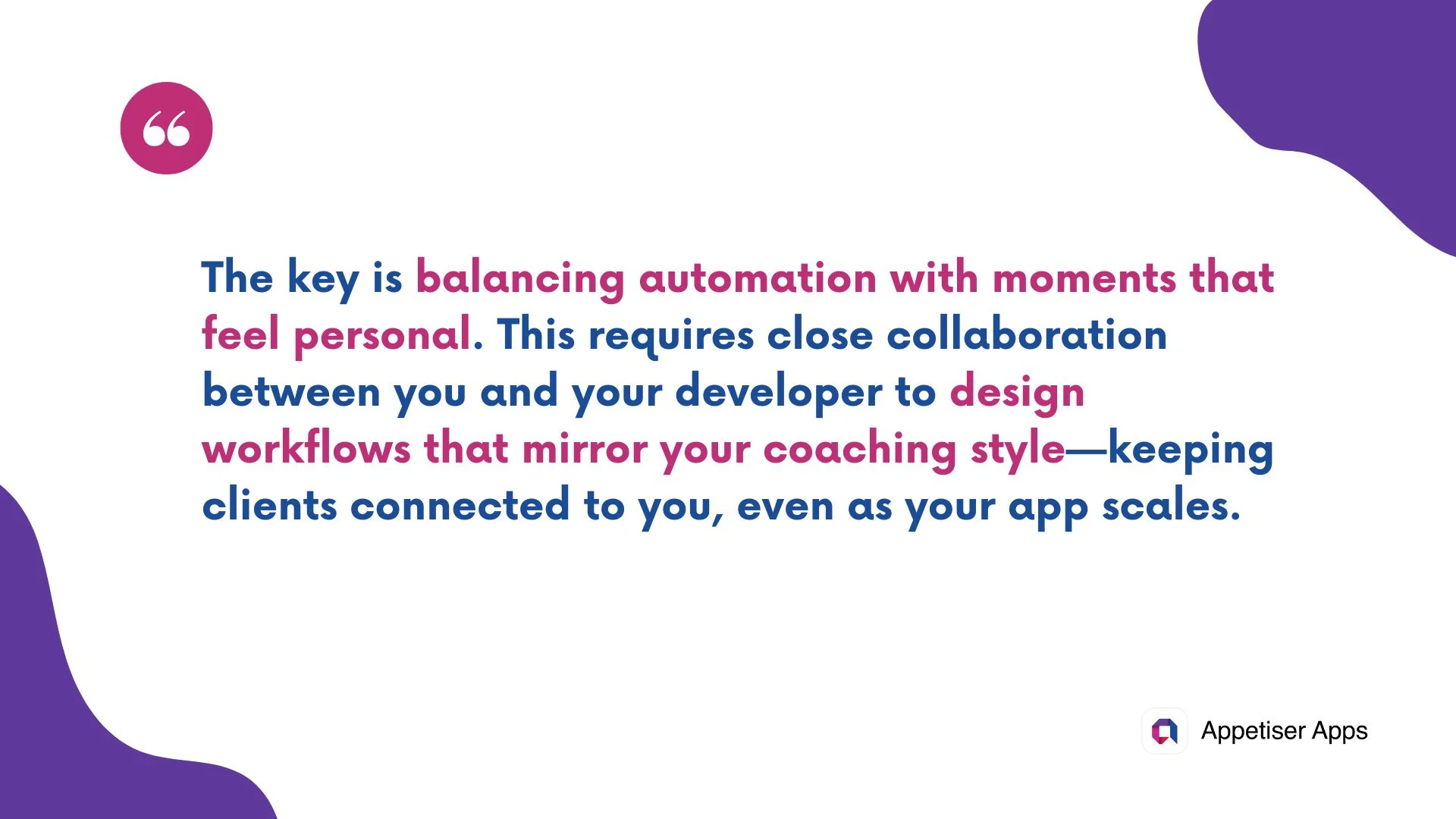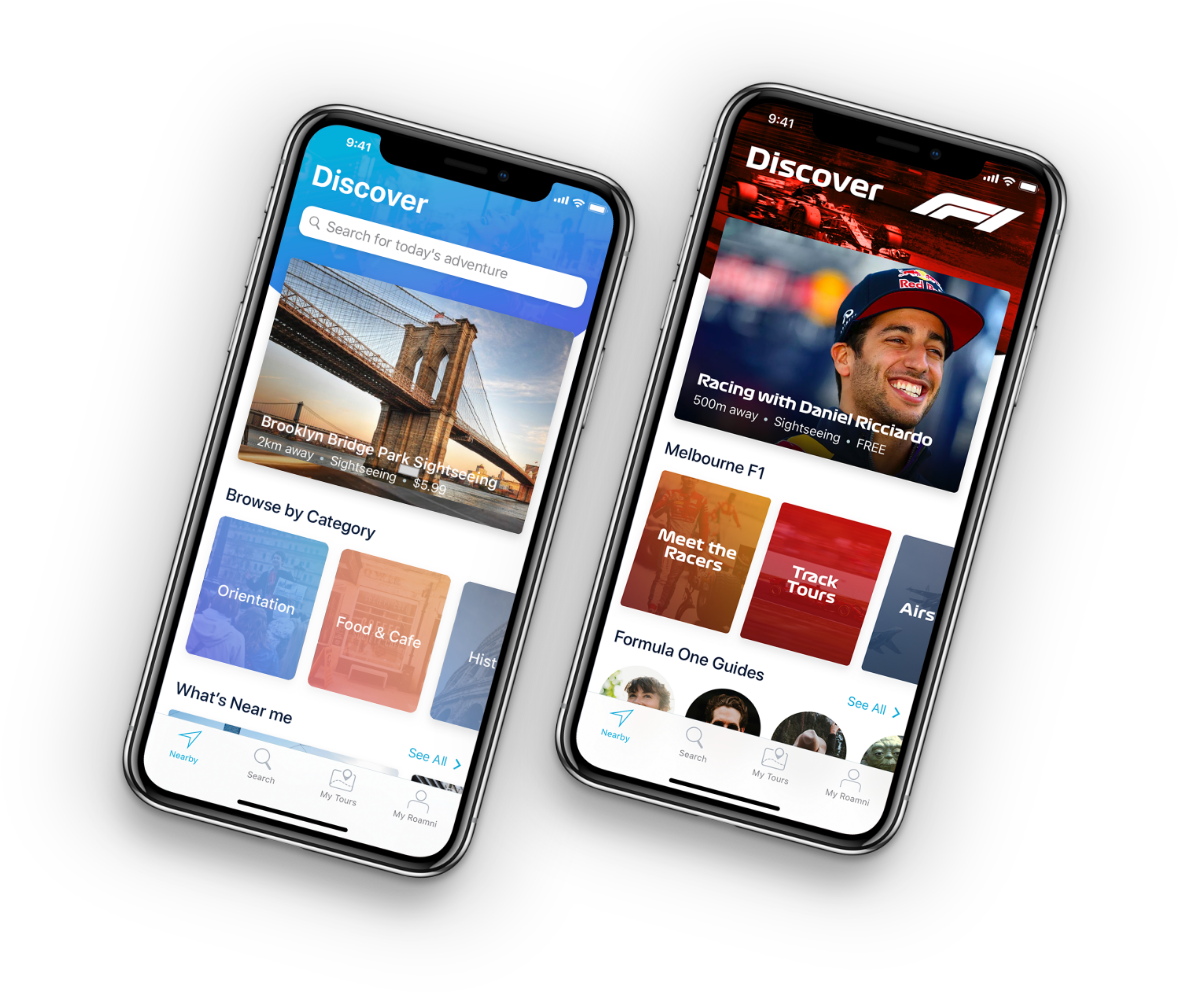How to Create Your Own Coaching App
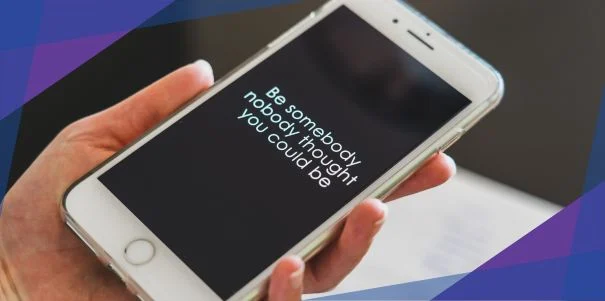
You started with Google Docs, Zoom links, and a folder full of PDFs.
Back then, it worked. Your method was solid. Your clients saw results. Simple.
But then came the growth. More clients. More moving parts. More late-night admin. You’re stuck chasing tabs instead of momentum.
This is where many coaches hit a ceiling, not because their offer isn’t strong, but because their systems aren’t built to scale. Burnout’s hitting coaches too. The International Coaching Federation says 44% felt it in 2024.
You don’t need to do more. You need a better way to deliver what you already do best.
That’s where a coaching app comes in.
A custom, branded space that delivers your program the way you actually coach. Clean, consistent, and built to grow with you.
I’ll show you how to create a seamless, branded space that connects you to your clients and frees up your time.
Read on.
Why Every Coach Needs a Coaching App
1. You’re doing too much
Calls. DMs. Spreadsheets. Reminders. Managing clients shouldn’t feel like a full-time admin job.
A coaching platform puts everything in one place. It saves you hours every week. You stay focused on coaching, not chasing links or digging through inboxes.
2. Your time has a limit
You can only take so many calls in a day. That means your income is capped by your calendar.
With a custom app, clients can work through your programs anytime. You make more money without adding more hours.
3. Clients expect a pro experience
Today’s clients want ease. They want progress tracking, resources, and support in one place.
Your own app gives them that. It makes your brand feel polished and professional and shows clients you’re serious about what you do.
4. You’ll keep clients longer
The easier it is to stay engaged, the longer they stick around. Push notifications. Progress check-ins. Built-in communities. Your app becomes the daily reminder they need to keep going. That means higher retention and better results.
5. You can scale what works
Running a 6-week challenge? Hosting group coaching? Offering courses? Your app can support it all. Add offers, update content, and grow without switching tools. It’s built to grow with you.
How to Create Your Own Coaching App
1. Build it around your coaching style
Before you get into the feature lists and payment setups, pause for a second. Your app shouldn’t feel like a platform. It should feel like you. Your voice, your presence, your energy.
Are you structured and strategic? Let your app guide clients through weekly tasks, sprints, and measurable goals. Are you more intuitive and reflective? Make space for journaling, daily check-ins, and on-demand voice notes.
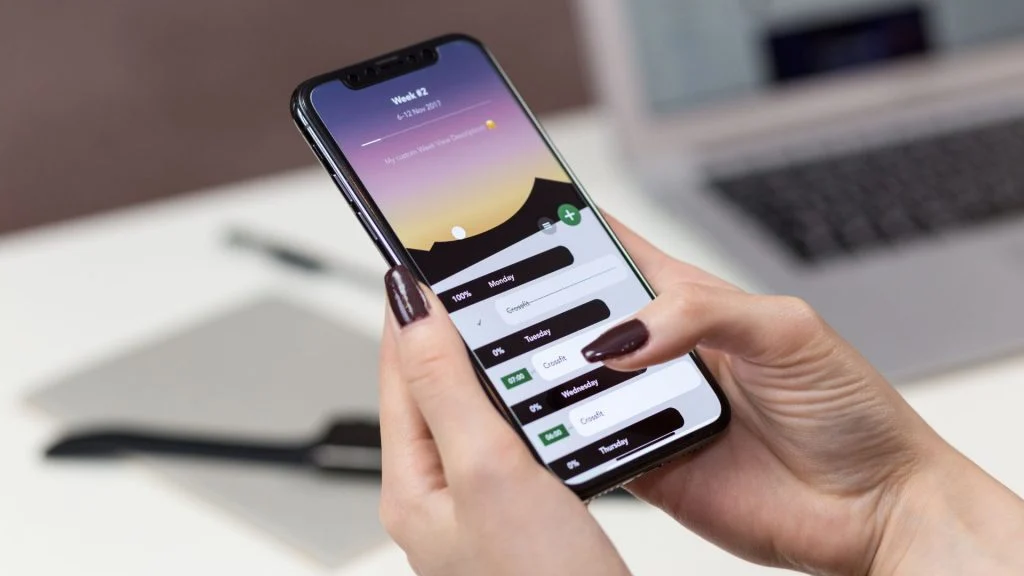
From our experience building coaching software, the biggest mistake we see? Coaches jumping straight to what the platform can do without mapping how they coach first. The result? A shiny app that doesn’t match the way they actually work.
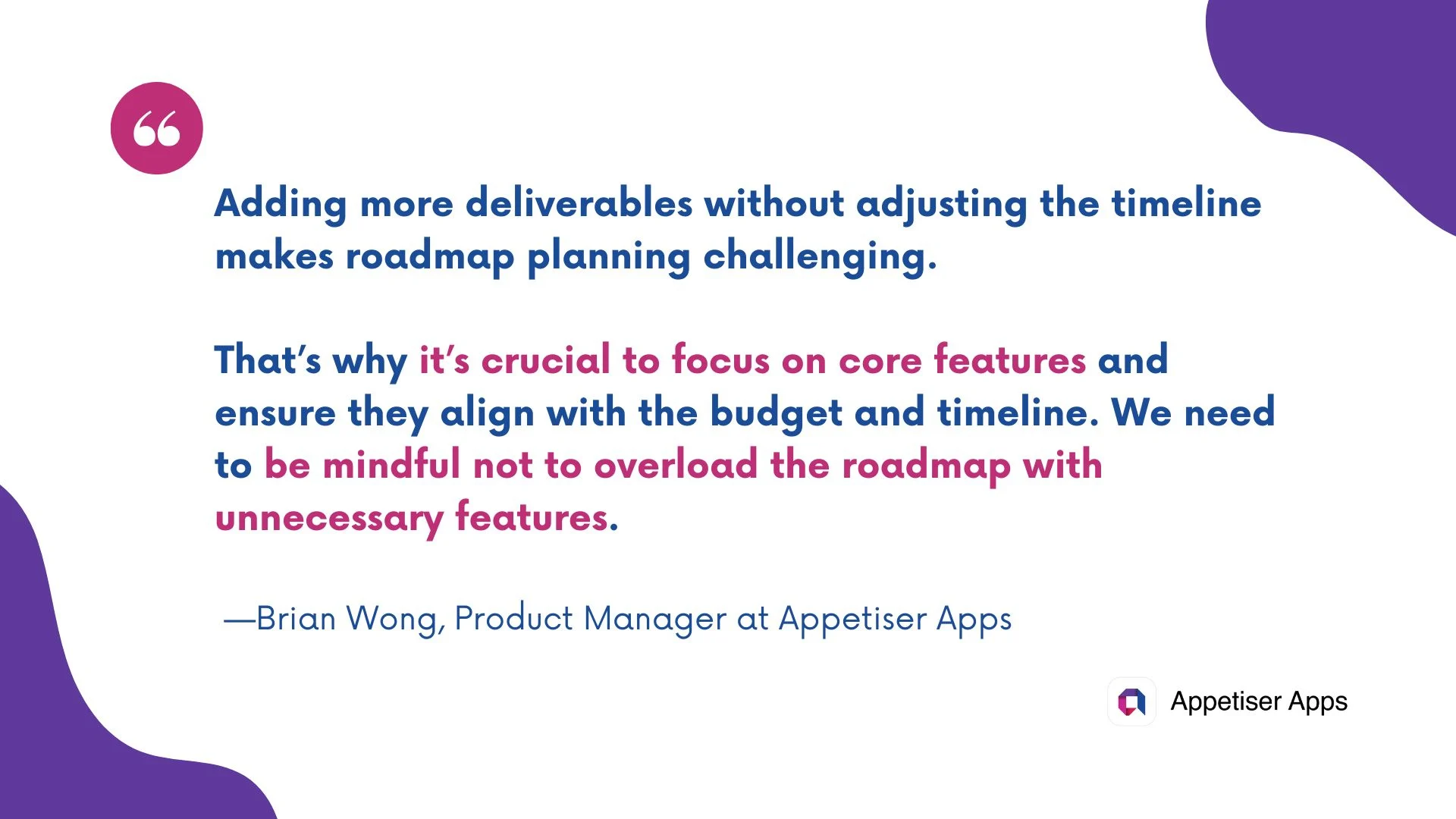
So step back and ask:
- Who lights you up to coach?
Founders in burnout? Creatives in reinvention? Speak to them and no one else.
If your app tries to serve everyone, it’ll connect with no one. - What’s your delivery style?
Do you follow a framework? Offer fluid coaching? Your app should support your real process — not box you into someone else’s system. - What’s your signature offer?
Every great coaching app starts with one core offer. Whether it’s a 6-week transformation or a rolling monthly space, design your app around that. You can layer in self-paced modules, live sessions, or bonus tools later. But get the core right first.
This leads to my next point.
2. Know the journey before you build the road
Don’t start with features. Start with your best offer.
What transformation do you already deliver? A 6-week sprint? A group mastermind? A daily mindset challenge?
That’s your foundation. Then, break it down. Start by mapping your core offer into a detailed user flow:
- What content or actions happen at each stage
- What progress or results need to be tracked
- How clients engage—are they submitting homework, joining calls, or checking in daily?

Only once that’s clear should you define the technical requirements. This keeps the build lean, focused, and aligned with your actual coaching method—no wasted features.
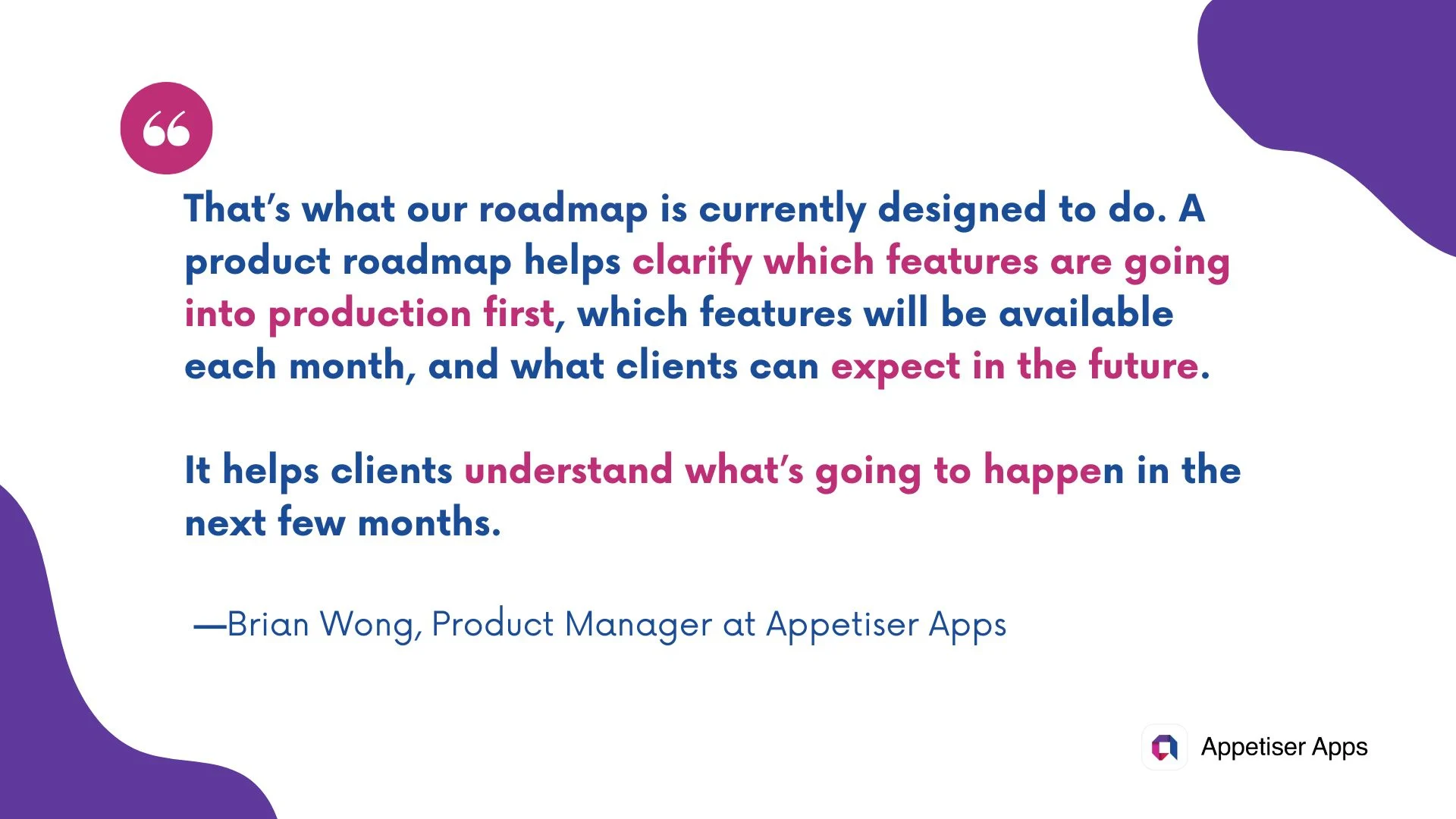
From there, create wireframes or simple prototypes to test the user flow early. This approach ensures you build an app that your clients actually want to use and keep coming back to.
3. Choose the platform that works for you
You need a platform that fits how you coach and not forces you to change your process to match the tech. Don’t get distracted by bells and whistles.
From a developer’s lens, here’s what matters:
- Brand flexibility. Can you customize colors, fonts, icons, and onboarding flows so your clients feel your brand the moment they open the app? White-labeling or light customization matters more than you think.
- Content structure. Does the platform let you mix live calls, self-paced modules, community chat, and resource libraries? A lot of coaches evolve into hybrid models, so you want a setup that can grow with you.
- Client experience. Are the login, navigation, and notifications intuitive enough that clients can use it without a manual? You shouldn’t be spending hours explaining how to find lesson 3.
Think of it this way: 👇
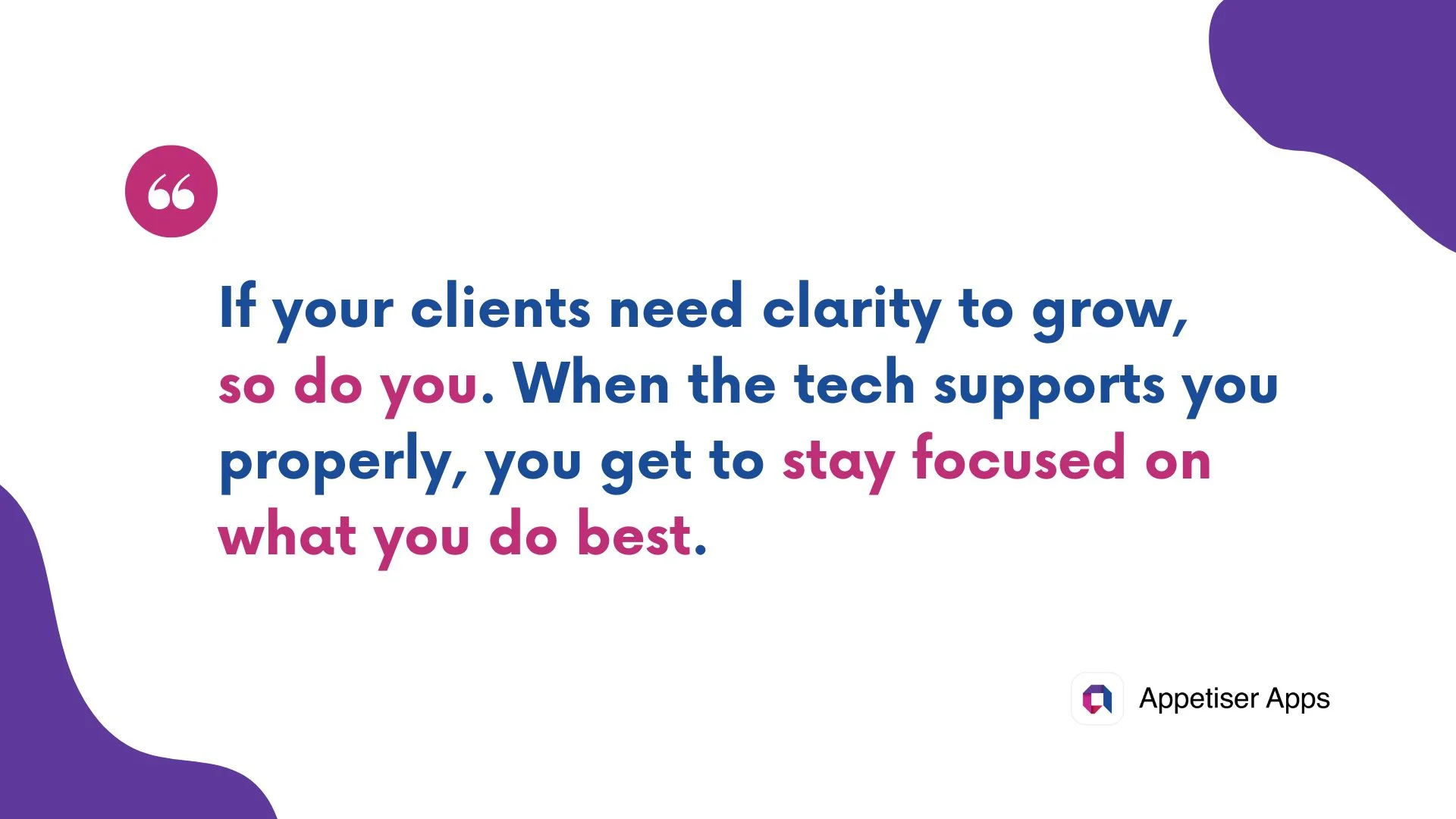
4. Design for flow, not just features
Apps that stick create a clear path that guides clients naturally from one step to the next.
In mobile app development, this starts with user flows: What’s the first screen your client lands on? What options are clickable from there? Is the next action obvious, or do they stall?
App designers map out flows before we even start designing screens. Instead of simply thinking about what goes into the app, the focus is on guiding how someone moves through the experience.
Are they nudged to check in daily? Do progress bars or streaks keep them coming back? Are push notifications timed around their actual habits?
These elements create habit-forming moments that turn a one-time user into a loyal client.
| Pro tip: Give your tools names like “Momentum Check-in” or “Mindset Pulse.” Why? Because generic labels like “Form 1” or “Module 2” don’t stick. Branded names create emotional anchors, which boost engagement and make the app feel like an extension of your method. |
|---|
5. Launch small, but loud
You don’t need thousands of users on day one. What you need is a small group of real clients using the app exactly how you designed it.
This is your beta phase, a crucial step where real-world use reveals what works and what breaks. It’s your chance to catch bugs, understand user behavior, and refine features before scaling.
Start with people who already trust you. Let them test the app in their daily routine. Observe carefully: Are they completing the key actions? Where do they hesitate? What frustrates them?
Fix those pain points fast.
Once you’ve polished the core experience, share it confidently—not as just “an app,” but as a real upgrade that solves problems:
Examples:
✅ “Reflect, track wins, and rewire thought patterns—right from your phone (mindset/life coach)
✅ “Your custom workouts, meal plans, and check-ins—all in one place.” (fitness coach)
✅“Your team’s growth plan, streamlined and trackable from day one.” (business/executive coach)
Launching small keeps you focused on building something that truly fits your clients’ needs—and sets you up for success when you grow.
Want to get the essentials right from day one? Our article on building a strong MVP (minimum viable product) breaks it down. Check it out.
6. Keep the humans in it
Automation saves time, but as you already know, coaching thrives on real connection. Your app should scale your reach without losing your personal touch. That means designing features that encourage real interaction, not just passive content consumption.
For example:
- Build in voice note uploads or audio messages so clients feel your voice, not just your text.
- Schedule weekly check-ins with reminders that prompt engagement but don’t feel robotic.
- Use personalized push notifications triggered by client behavior (like congratulating progress or gently nudging after inactivity) instead of generic system alerts.

People also ask
How do I create my own coaching program?
Start with your method. What’s your unique coaching process? Map it out into steps—whether it’s weekly sessions, habit tracking, or daily mindset work. Then build structure around it using coaching resources like templates, check-ins, and progress trackers. Once your offer is solid, you can use coaching software or a white label coaching app to deliver your program digitally to unlimited clients.
How do I create my own learning app?
To build a learning app—whether for self-growth, business, or fitness—you’ll need a clear learning path and a platform that supports it. Some coaches use app builders, but working with an app developer helps ensure your app is truly custom. Add in online courses, quizzes, streaks, and progress tracking to create a full digital coaching experience. A great app should reflect your brand and be ready to launch in the Apple App Store or Google Play Store.
How do I create my own exercise app?
If you’re a personal trainer or wellness coach, start by outlining your workouts, nutrition guides, and check-ins. Then, bring it all together with the right coaching software or custom-built app. Look for features like habit tracking, client messaging, and smart reminders (similar to what a nudge coach does). Your app should make it easy to deliver personalized coaching experiences—with all the tools in one place.
Be the coach who shows up with an app that has your back
A coaching app won’t teach you how to coach better. It makes you more accessible, more efficient, and more indispensable.
Your time is limited. Your energy is finite.
Your ideas? They deserve a platform that carries the load, so you can focus on leading, inspiring, and transforming lives at the level only you can.
Let your app carry the weight.
Ready to build your own branded coaching app?
Learn how we help coaches create custom apps that simplify their workflow and grow their impact.
Book a free consultation with our product strategist. Let’s make your coaching easier and stronger.

Jane Eslabra has 14+ years of experience producing content across traditional and digital platforms. She channels her strong passion for fostering tech startup growth through knowledge sharing.


